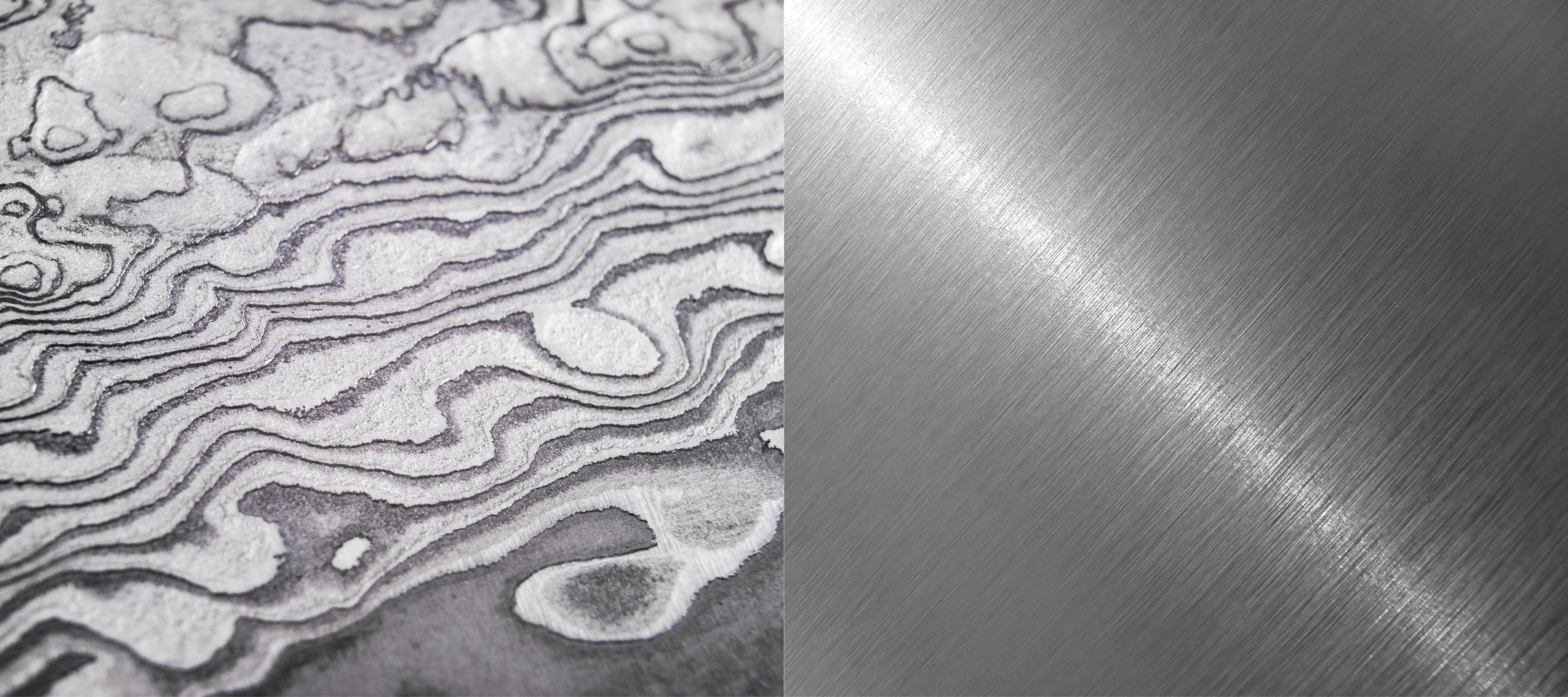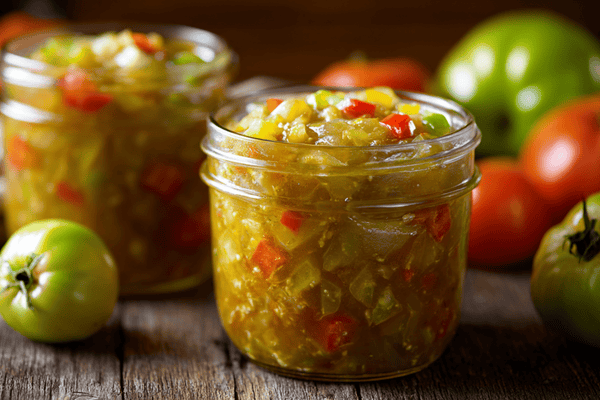
When it comes to buying a good-quality Japanese kitchen knife, there are a lot of things you’ll need to consider. But one of the most important factors is the type of steel that the knife is made from. The issue is that there’s a lot of jargon surrounding steel and unless you’re a professional metalworker or a scientist, it can feel overwhelming.
But don’t worry, we’ve got you covered and have put together this handy guide on the differences and similarities between Damascus steel and stainless steel to help you with your search.
These are two of the most common types of steel in knife-making so it’s important to better understand them.
Table of contents
What Is Damascus Steel?
Damascus steel knives are a popular choice but what exactly is this metal?One of the aspects that sets Damascus steel apart from other types of steel is that a Damascus blade has a wavy pattern across the surface.
While the true origins of this steel are unknown, it is believed that it dates back to around 500 BC! At this time, it would have been used to produce swords that were made incredibly durable and sharp in the process of forging. It was known as Damascus steel or wootz steel.
Historically, true Damascus steel was only made in the city of Damascus. This material was known for being able to cut through very hard materials. It was often claimed that a sword made of this steel would cut through low-quality swords and even solid rock.
Having a Damascus sword meant you would have a higher rate of survival when faced with the enemy. This is because of its superior toughness and sharp cutting edge.
It’s no wonder, then, they have taken this ancient technique used to make a top-quality sword and now use it in modern knife-making.
More than this, modern Damascus steel has unique wavy patterns, forged in the manufacturing process, that makes it one of the most beautiful metals. This is a result of the various elements used to create it and the way that they join together during forging. A Damascus steel knife is truly beautiful.

What Is Stainless Steel?
Many people think of stainless steel as an element in itself but this is not the case. Stainless steel is actually made up from metal and other materials including iron and carbon. It’s what is known as an alloy. What’s great about it is that it is very resistant to corrosion making it perfect for kitchen knives and items that may be exposed to moisture, as it is less susceptible to rust.
There are many different types of stainless steel so it can get confusing. There are even some that barely classify as stainless steel such as D2 steel. This is a very high chromium metal but not quite enough to allow it to fall into the stainless steel category, although many would argue this.
Unlike other types of stainless steel, D2 has incredible hardness and is far more durable and tough and is incredibly resistant to rust. It’ll perfectly retain its sharper edge which is why it’s a great choice for knives. A stainless steel knife is truly durable.

Which Is Better: Damascus Steel or Stainless Steel?
The main difference between Damascus steel and stainless steel is the process in which they are made and therefore the appearance of Damascus steel. Various elements such as carbon, nickel, chromium and manganese are forged together but the key to telling them apart is the giveaway pattern and beauty of a Damascus steel blade.On its surface, stainless steel has no marks or patterns whereas Damascus steel gains an almost swirled effect. This happens because of the technique used to make the material.
The different layers of steel forged to make the blade are heated and cooled continually. As this happens, they begin to fold in on one another before flattening out and this is what gives Damascus steel its pattern and beautiful appearance.
When looking at real Damascus steel blades, you may notice that there are several layers of materials. Usually, this will be a harder layer at the core surrounded by two softer layers of high-carbon steel on either side.
The hard layer is incredibly sharp and, due to exposure on the side of the blade, is responsible for much of the edge retention and cutting ability of Damascus knives.
On the other hand, those softer parts will help to retain the edge of the blade so Damascus layered steel is exceptionally good.
But apart from this, blades made with either steel are incredibly durable and resistant which is why they’re so frequently used for blades and knife-making.
One of the plus sides of stainless steel knives is that they are incredibly corrosion-resistant. This is because of the amount of chromium in the blade which cannot be any lower than 10.5%. It is also possible to add other elements to stainless steel to boost its resistance, commonly things like copper and nickel.
Durability
Both stainless steel and Damascus steel are very durable. The answer to what makes this so is the combination of elements that causes these metals to be hard yet extremely flexible, so they’re much more difficult to break. Not only this but they’ll both retain an edge exceptionally well.Between the two, there is no clear winner when it comes to durability so it’s important to consider other factors when choosing a knife.
Damascus Steel vs Stainless Steel Uses
Stainless steel is seen everywhere. You’ll find it in a whole variety of kitchen utensils and appliances as well as in other settings like on the construction site. There’s no denying that it’s a very versatile material.But the same cannot be said for Damascus steel. This material is only ever used in the manufacturing of knives.
Final Thoughts
 If you have been shopping for kitchen knives, you will have noticed that there are a lot of features to think about. Choosing which type of steel you would like your knives to be made from is one of them and you’ll notice that two of the most common metals are stainless steel and Damascus steel. But is there a difference?
If you have been shopping for kitchen knives, you will have noticed that there are a lot of features to think about. Choosing which type of steel you would like your knives to be made from is one of them and you’ll notice that two of the most common metals are stainless steel and Damascus steel. But is there a difference? The only real difference between the two is the history and the way that they are made which, for Damascus steel results in a pattern forming on the surface of the blade. In almost every other way, the two metals give the same performance for edge retention, hardness, sharpness etc, so whichever you choose, you can feel confident you will have a high-quality kitchen knife for the price.


